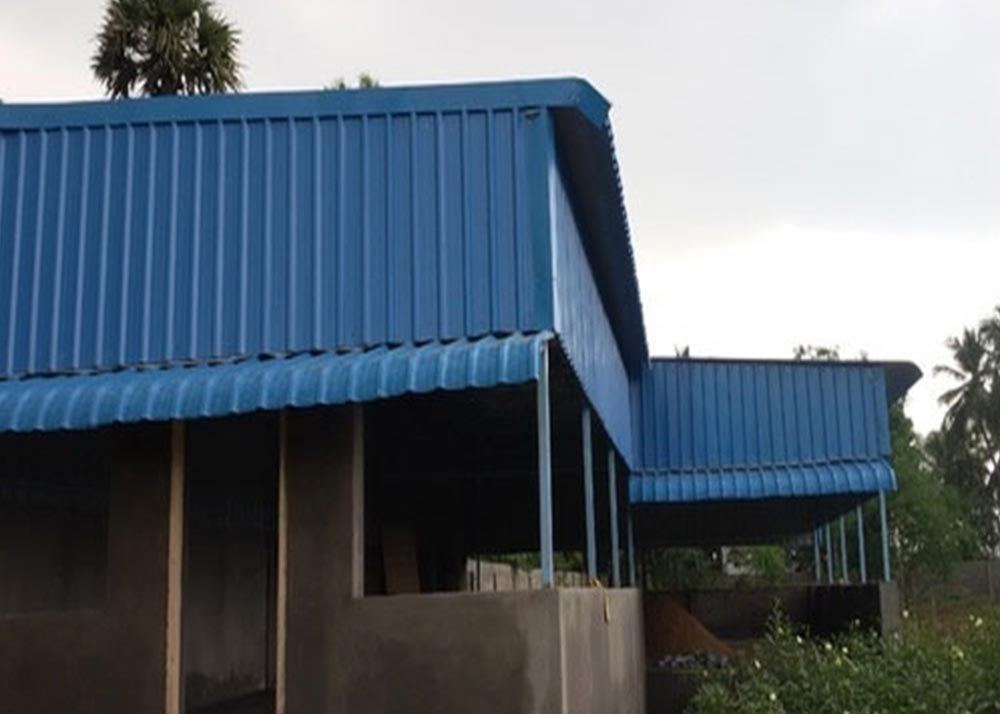Noise/Sound Insulation Work
Noise/Sound Insulation Work involves the installation of materials and systems designed to reduce or control the transmission of sound between spaces. This is essential in residential, commercial, and industrial settings to improve comfort, privacy, and compliance with noise regulations. Below is a comprehensive guide to noise/sound insulation work, including materials, techniques, applications, and benefits.
Types of Noise/Sound Insulation
Airborne Noise Insulation:
- Reduces sound transmitted through the air (e.g., voices, music, TV noise).
- Examples: Walls, ceilings, and windows.
Impact Noise Insulation:
- Reduces sound caused by physical impacts (e.g., footsteps, furniture movement).
- Examples: Floors and ceilings.
Structure-Borne Noise Insulation:
- Reduces sound transmitted through building structures (e.g., vibrations from machinery).
- Examples: Foundations, walls, and floors.
Materials Used for Sound Insulation
Acoustic Panels:
- Made from foam, fiberglass, or mineral wool.
- Used for walls and ceilings to absorb sound.
Mass Loaded Vinyl (MLV):
- A dense, flexible material that blocks sound transmission.
- Used in walls, floors, and ceilings.
Fiberglass Insulation:
- Lightweight and effective for absorbing sound.
- Commonly used in walls and ceilings.
Mineral Wool:
- Dense and fire-resistant, ideal for soundproofing.
- Used in walls, floors, and ceilings.
Acoustic Foam:
- Lightweight and porous, designed to absorb sound waves.
- Used in recording studios, home theaters, and offices.
Resilient Channels:
- Metal strips that decouple walls and ceilings to reduce sound transmission.
- Used in wall and ceiling assemblies.
Soundproof Drywall:
- Heavier and denser than regular drywall, designed to block sound.
- Used in walls and ceilings.
Acoustic Sealants:
- Specialized sealants used to fill gaps and prevent sound leaks.
- Applied around windows, doors, and wall joints.
Cork:
- A natural material with excellent sound-absorbing properties.
- Used for flooring and wall coverings.
Green Glue:
- A viscoelastic compound used between layers of drywall to dampen sound.
- Applied in walls, ceilings, and floors.
Techniques for Noise/Sound Insulation
Decoupling:
- Separating two sides of a wall or floor to prevent sound transmission.
- Techniques include using resilient channels or staggered stud walls.
Adding Mass:
- Increasing the density of walls, floors, or ceilings to block sound.
- Examples: Using soundproof drywall or MLV.
Absorption:
- Using porous materials to absorb sound waves.
- Examples: Acoustic panels, fiberglass, or mineral wool.
Damping:
- Reducing vibrations that transmit sound.
- Examples: Using Green Glue or acoustic sealants.
Sealing Gaps:
- Filling cracks, gaps, and holes to prevent sound leaks.
- Examples: Using acoustic sealants or weatherstripping.
Applications of Noise/Sound Insulation
Residential:
- Soundproofing walls, floors, and ceilings in apartments and homes.
- Reducing noise from neighbors, traffic, or appliances.
Commercial:
- Insulating offices, conference rooms, and hotels for privacy and comfort.
- Reducing noise in restaurants, theaters, and retail spaces.
Industrial:
- Controlling noise from machinery, equipment, and production processes.
- Insulating factories, power plants, and workshops.
Entertainment:
- Soundproofing recording studios, home theaters, and concert halls.
- Enhancing acoustic performance and reducing external noise.
Healthcare:
- Insulating hospitals, clinics, and laboratories for patient comfort and privacy.
- Reducing noise from medical equipment and foot traffic.
Benefits of Noise/Sound Insulation
- Improved Comfort: Reduces noise levels for a quieter environment.
- Enhanced Privacy: Prevents sound from traveling between rooms or buildings.
- Compliance: Meets building codes and noise regulations.
- Increased Property Value: Adds to the appeal and functionality of a property.
- Better Acoustics: Improves sound quality in spaces like theaters and studios.
- Health Benefits: Reduces stress and improves sleep by minimizing noise pollution.
Steps for Sound Insulation Work
Assessment:
- Identify the source of noise and the areas requiring insulation.
- Measure noise levels and determine the required Sound Transmission Class (STC) or Impact Insulation Class (IIC) ratings.
Material Selection:
- Choose appropriate materials based on the type of noise and application.
Installation:
- Follow proper techniques for decoupling, adding mass, and sealing gaps.
- Ensure all joints, seams, and penetrations are properly sealed.
Testing:
- Conduct sound tests to verify the effectiveness of the insulation.
- Make adjustments if necessary.


